#North Country Library System
Explore tagged Tumblr posts
Text
Did you know that the Catalan vault can be found in many buildings of the United States of America?
Here's some examples:

Grand Central Terminal, New York City. Photo from Getty.

Boston Public Library. Photo by Michael Freeman/Boston Public Library.

Ellis Island Registry Room, New York. Photo by Mike Ward on Flickr.

City Hall station of the New York subway. Photo by Michael Freeman.
The Catalan vault is a brick arch that is widely used in traditional Catalan architecture. It's also present in other parts of the Mediterranean, but not as common. Its main characteristic is that it's built with the longest side of the brick facing down (usually, ceilings are made with the shortest side facing down) and with a very gentle curve, resulting in a strong self-supporting vault that allows covering a whole room without needing columns or pillars in a way that would be impossible with other kinds of masonry, and also makes it possible to build it quickly and without needing centering (the wooden structure used to support the vault or arch while it's being built, and which is removed once it's made).
So how did it make its way to the USA?
It was brought by the Valencian architect Rafael Guastavino i Moreno (1842-1908). He had already designed important industrial buildings in Catalonia, including the factory that later became the Industrial School in Barcelona and La Massa theatre in Vilassar de Dalt, among others. At the time, in Catalonia, the Catalan vault was being widely used to cover ceilings in factories.
In 1881, Guastavino moved to New York City (USA), where he used the Catalan vault to cover big ceilings, which made him gain some fame for it. He patented the vault in the USA with the name "Guastavino system".
At the time, Americans were very worried about buildings catching fire, because it often happened and had caused a huge destruction in the Chicago 1871 fire. As a response, in 1883 Guastavino bought a patch of land in Connecticut, built two houses in it using the Catalan vault, and set them on fire. He took photos of the whole process to document it and prove how this architecture style is efficient in the case of fire. He wrote about it in the magazine Decorator and Furnisher and soon won the contest to design the Progress Club's building in New York City, which made him famous among architects in the area.
He created his own company (Guastavino Fireproof Construction Company) which was focused on building the Catalan vault. He was hired for many buildings and this architectural element spread. Most churches with stone vaults built between 1890 and 1940 in the USA were designed by Guastavino's firm, as well as many other buildings across the country, particularly New York and Massachusetts.
He's buried in the St. Lawrence Basilica in Asheville (North Carolina, USA), a building he designed.
#arquitectura#arts#història#architecture#new york#new york city#usa#architecture history#art history#guastavino#guastavino tiles#vault#beaux arts#modern architecture#north carolina#other countries#valència#país valencià#diaspora
66 notes
·
View notes
Text
Excerpt from this story from Revelator:
Every June, cities around the globe celebrate Pollinator Week, an international event to raise awareness about the important roles that birds, bats, bees, butterflies, beetles, and other small mammals serve in pollinating our food systems and landscapes. These crucial species are declining worldwide, with many on the brink of extinction.
Cities have responded to this crisis with a variety of urban initiatives designed to foster pollinator habitats and in the process transform once-stark cement landscapes — as well as pocket parks, curb strips, and highway dividers — into lush, welcoming areas for pollinators and humans alike.
In Washington, D.C., ambitious pollinator projects are abundant on rooftops of public, office, and private spaces, ranging from the renovated D.C. Public Library’s main branch to National Public Radio’s headquarters, which hosts an apiary. Throughout the District of Columbia, municipal code requires buildings to maintain the tree boxes and curb strips outside their properties. This often leads to creative landscaping on the smallest of scales.
It’s not just businesses. Parks and other public spaces also play an important role. For example, Fargo, North Dakota’s Urban Pollinator Plots Project aims to establish more than 50 acres of high diversity, forb-rich, native prairie plantings in urban parklands.
“I think some of the bigger challenges are just simply the establishment of the prairie,” says Sam DeMarais, a park forester in the Fargo Park District, who oversees the program. “It’s a skill set and a knowledge base that really takes a keen eye and some diligence on doing it properly. Everyone thinks you can just plant the prairie and let it go, but that’s not really the case.”
Fargo’s and Washington, D.C.’s programs are each over 10 years old, and time has brought knowledge of what works and doesn’t, and the ability to adapt. But less-established initiatives across the country could provide even more clues. A new project at the Port of Vancouver, in Washington state, aims to add a small native plant and flower pollinator garden in the port’s mitigation bank in the Lower Columbia River watershed. It could serve as a case study in introducing pollinators into industrial areas. In Michigan, the nonprofit organization Detroit Hives showcases how to transform vacant lots into pollinator-friendly habitat, a program that recently contributed to Detroit joining the Bee City USA program. Researchers in Puerto Rico are examining the relationships between animal and plant resources in urban areas on the island, and conducting interviews to learn more about public perspectives on plants and wildlife.
But why stop at the city level? Pollinator programs around the world can look to Ireland, where the entire island, north and south, has implemented the All-Ireland Pollinator Plan, a program that brings together community groups, local authorities, councils, businesses, farmers, and others to create a pollinator-friendly landscape.
45 notes
·
View notes
Note
hi I like your blog. I have a question that may be too personal so no hard feelings if you don't answer but could you talk a little bit about more about what you like/don't like about Halifax? im considering Dalhousie for grad school but have never been! and would like to have as much information about where I might spend the next 2 years of my life. thank you!
Oh sure! Though like, it depends on where you're coming from? Everything here is very relative. And also I'm absolutely certain I will forget numemrous vital things, do ask followup questions.
Most important thing is that the housing market is horrifying - the city's population started booming during COVID and the zoning and construction is only really starting to catch up now. Especially within walking distance of Dal getting a place to live at anything approaching affordable is going to be vicious. (This has unsurprisingly coincided with a large uptick in homelessness. Unremarkable to walk by a tent in a corner of some public park now).
Relatedly, the bus system is like - okay I'm not sure it's notably bad for a mid-sized-ish north american city, but it's damn sure not any better. You can get by bussing around on the peninsula, anywhere beyond 20 minute drives turn into 40-60 minute rides.
You will not have a family doctor, figure out the nearest walk-in clinic you can use for anything non-emergency.
The city's economy runs on some combination of students, tourists, sailors and soldiers. There are as many bars as you might expect (had the most per capita in the country for a while, don't know if we still do). Some of them are actually very good!
Relatedly, weed and liquor are both only legally sold by the crown corporation monopoly and a few weird specialty places.
None of them are massive, but there is a very nice amount of parkland and green space scattered throughout the city. The public (botanical) gardens are really beautiful in the spring-summer, and most are well-maintained (they just renovated and expanded the outdoor pool on the city Commons last year, even).
The waterfront has been thoroughly gentrified for the cruise ships over the course of my lifetime, but it's all still open to the public and grabbing one of the armchairs or hammocks to read in during the summer is lovely.
Provincially the government is the most thoroughly domesticated/red tory party in the country (they fairly literally ran to the left of the liberals). Full of corrupt backslapping, constantly getting into pissing matches with the municipal government, will probably govern for the next decade.
For reasons that I assume are downstream of all the students and having the closest thing to a regional theater scene east of Quebec, the whole city is IME very queer-friendly. For reasons I absolutely not understand, pride is in August here.
The public library system is basically the only part of the municipal government I think anyone involved should be unequivocally proud of, but it is great.
I don't really know the crime stats offhand but like, I left my apartment door unlocked probably 7 times in 10 through all of undergrad and it never bit me in the ass?
20 notes
·
View notes
Text
Forget the Snowglobe: Arendelle, A Real European Nation in the Late 19th Century 🏰🏭
In the 1870s-1880s, the world wasn't a fairytale. It was a chessboard of empires, roaring with industrial innovation, fraught with political tension, and driven by raw ambition. While Disney's Arendelle nestled quietly in the 1840s, or not since Europe was still rock with the revolutions and chaos, thanks to end of Metternich Era, now let's try to imagine the Kingdom of Arendelle squarely in this turbulent era, sticking into the historical context given by this timeline. Think of this as an analysis and thought experiment of what would Arendelle will be if it exist in the Late 19th century.
This isn't just a quaint kingdom; it's a grounded nation-state, forged in the crucible of real-world geopolitics:

Kingdom of Arendelle, in Frozen II
A Powerhouse in the North? A Nation Defined by Grandeur and Growth🌇🌃
To place it into the world in Late 19th century, Arendelle will be no longer merely a picturesque village with a castle. Imagine a burgeoning European nation with a national population soaring past 900,000 inhabitants, small by imperial standards but potent enough to demand respect. Its capital, boasting over 100,000 souls, is a thriving metropolis divided into distinct districts, its territory clearly established across the Continent of Europe. We could imagine that it may be strategically positioned East of the North Sea, North of Norway, Sweden, and Finland, West of Russia, and just South of the Arctic Circle, given on its Nordic Traditions which I speculates it may be a part of Scandinavia/Baltic Region, Arendelle commands a vital northern crossroads.
Visualize a capital not unlike the burgeoning European giants of the era: the grand boulevards of Paris, the bustling docks of London, the imperial majesty of Vienna, or the industrial might of Berlin. Arendelle's capital is a true symbol of late 19th-century urban prosperity: magnificent stone infrastructures house government offices, towering business buildings, bustling foreign embassies, robust banks, modern hospitals, disciplined police headquarters, esteemed universities, opulent theaters, galleries, and libraries. Its wide, stone streets hum with the ceaseless rhythm of horse-drawn carriages, elegant horses, and a vibrant populace moving back and forth, weaving through loud, wide, thriving international markets and bazaars, past serene parks adorned with statues and fountains. Its large, international ports are gateways to global trade, testament to a country with real people, real industry, and undeniable geopolitical weight.

Skyline of 19th century Paris, Capital of France.
A Government Grappling with Change: Enlightened Rule Amidst Political Tides👑
Putting into the context of Late 19th century where the world was in transition from traditional government to democracy and liberalism, Arendelle operates as an Absolute Monarchy tempered by a Parliamentary System. This unique structure positions Elsa as an Enlightened Despot or a powerful monarch, much like Catherine the Great and Queen Victoria, some of the history's most powerful and influential female monarchs. Yet, Elsa embodies a sincere compassionate heart for her people, untouched by scandals and bigger intrigues. Imagine the delicate, high-stakes dance between royal decree and public representation. On one side, the aristocratic nobilities cling to the conservative views lingering from the Metternich Era; on the other, the common people – from impassioned students to enlightened thinkers – clamor for Liberty, Equality, and Rights echoing the fervent calls of the great-grandsons and granddaughters of the American and French Revolutions.
In the dawn of this new era, politics transcends mere royalty and monarchy; it's a burgeoning movement, a compelling call for liberty, equality, and representation across every stratum of a divided society. Consider the volatile landscape of France, where radicals, liberals, and monarchists (whether Bonapartist, Orleanist, or Bourbonist) relentlessly strove for domination. Or observe Britain, where governmental power slowly, but inexorably, transitioned from the Monarchy to the Parliament, which increasingly represented the voice of the British people. Elsa's Arendelle stands at this very precipice of profound political evolution.

Queen Victoria of United Kingdom of Great Britain and British Empire.
Resources That Spark Ambition: The Engines of Industrial Power.👨🏭💰
Strategically nestled East of the North Sea, North of Norway, and West of Russia, Arendelle commands invaluable natural resources: iron, coal, timber, and fur. In an age ravenous for industrial might, these are not just mere exports; they are powerful magnets for international attention and ambition. This isn't merely about ice trade anymore; it's about the very engines of the Industrial Revolution that define global power.
Resources were the lifeblood and pride of each nation. Think of Great Britain, whose abundant iron and coal catapulted it to the forefront of the Industrial Revolution, making it the most industrialized nation-state in the late 19th Century. In a world striving for modernity, resources are not just a hallmark of a kingdom or nation-state's unique identity, but its very bloodline – the essential key to its innovation, growth, and survival.

Trains and Railroads, powered by steam locomotive are considered as one of the hallmarks of Industrial Revolution.
A Diplomatic Web of Alliances: The Great Game and the Scramble for Power⚔️🌍
Given on the context of Late 19th century, Arendelle is far from an isolated kingdom living on its own accord. A standalone nation was an easy prey for the predatory great powers of the era. Instead, Arendelle will be meticulously woven into the intricate fabric of European power plays, strategically forging alliances with major players. It might align with Spain or Italy, find common cause with the expansive British Empire, or even extend its diplomatic reach to the distant Empire of Japan, an aggressive Asian nation rapidly proving its military and industrial capacity to stand toe-to-toe with European might.

Major Ports Cities in Europe like London, Amsterdam, Lisbon, Barcelona, and Copenhagen where several ships coming from across the world docked, are center of trade, commerce, and cultural, intellectual, and technological exchange.
These are not simple friendships born of goodwill. They are calculated strategic partnerships in a world defined by the "Great Game" in Central Asia and the brutal "Scramble for Africa." These alliances are deeply rooted in mutual interest and ambitions, shifting political dynamics, and tangible economic benefits that could boost trade and commerce and exchange of ideas, technologies, knowledge, and cultures. Reflect on the Triple Entente between Great Britain, France, and Russia, forged out of mutual fear of the growing power of the German Empire; or the Anglo-Japanese Alliance, a shrewd move to counter Russian expansion; or the Triple Alliance uniting the German Empire, Austria-Hungary, and the Ottoman Empire. Such alliances prove the fragile grip of peace within the world, as they played a key factor in the massive conflicts that were soon to come.

The Birth of German Empire in Hall of Mirrors, Palace of Versailles, January 18, 1871
This Arendelle would be if grounded in the gritty, thrilling realities of the late 19th century, far cry from the kingdom we had witnesses in Frozen and Frozen II. A place where magic meets geopolitics, and every choice has a continent-spanning consequence. Just a simple disclaimer, this is just a fun analysis of what might Arendelle will be if being placed into the real life historical context of Late 19th century, specifically for a European Kingdom. To anyone who read this, all of you had the right to agree and disagree with my analysis and to speak and give your own views and opinions yet before you dive into your thoughts, please understand that this space is built on respect and constructive engagement so please, to everyone who read this, be mindful, respectful, and thoughtful especially in choosing our words to say or type, not only in giving your opinion and views regarding on this analysis and thought experiment but also whenever we interact with other people, whether online or face to face interactions
Intrigued by an Arendelle that feels undeniably real? Dive into a story where the beauty is still there, but the stakes are higher than ever in my Dark Fantasy Romance Historical Anime x Frozen Fanfiction 'The Lord of Death and The Queen of Ice: Whisper of Moon and Flower.'
Here is the link to my Fanfiction:
Sources:
For Historical Context and Informations
- World History Encyclopedia.Com
- Britannica.Com
- History.Com
For Pictures
- Pinterest.
This is my first post in Tumblr and I hope to anyone who read this, that you you will like it. I'm quite an introverted writer after all, even in internet or social media yet I want to interact with other writers and authors across the globe, share my own works and my own analysis, views, and opinions, and make friends. Thank you and Have a Nice Day/Night!❤️❤️❤️
#elsa frozen#frozen au#historical fiction#frozen fanfic#19th century#alternate history#historical au#elsa of arendelle#historical#geopolitics#frozen#historical romance#dark fantasy#period drama#historical analysis#thought experiment#elsa fanfiction#fanfiction#original character#history
2 notes
·
View notes
Text
Good News - March 8-14, 2024
Like these weekly compilations? Support me on Ko-fi! Also, if you tip me on here or Ko-fi, at the end of the month I’ll send you a link to all of the articles I found but didn’t use each week - almost double the content! (I’m new to taking tips on here; if it doesn’t show me your username or if you have DM’s turned off, please send me a screenshot of your payment)
1. Colorado could bring back wolverines in an unprecedented rewilding effort
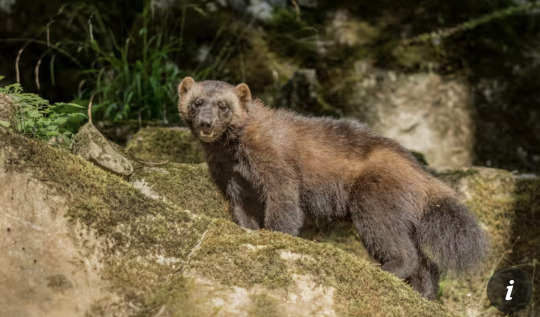
“A bipartisan group of Colorado lawmakers are proposing legislation to reintroduce wolverines, one of the country’s rarest carnivores, into a state primed with deep snow and high mountains. The unprecedented move would be the first wolverine reintroduction in North America, and is part of an ongoing effort by Coloradans to restore the state’s native species.”
2. heat pumps slash emissions even if powered by a dirty grid

“Installing a heat pump now is better for the climate, even if you run it on U.S. electricity generated mostly by fossil fuels. […] Across the 48 continental states, RMI found that replacing a gas furnace with an efficient heat pump saves emissions not only cumulatively across the appliance’s lifetime, but also in the very first year it’s installed.”
3. Bald eagles seen nesting in Toronto for first time in city’s recorded history

“Presence of birds proof of improving health of city’s green spaces, as they are highly sensitive to environmental disturbances”
4. Good news for coral reef restoration efforts: Study finds 'full recovery' of reef growth within four years
“"We found that restored coral reefs can grow at the same speed as healthy coral reefs just four years after coral transplantation," says Ines Lange of University of Exeter, UK. "This means that they provide lots of habitat for marine life and efficiently protect the adjacent island from wave energy and erosion."”
5. The rewilding project bringing back an ancient breed of cattle to Portugal

“For millennia, grazing aurochs created open spaces for other species to thrive. As the closest to the extinct auroch depicted on the prehistoric engravings, Goderie says tauros can fulfil [sic] a similar ecological function that is vital for biodiversity. "Natural grazing will lead to more natural processes that are missing from local ecosystems, more habitats and more biodiversity," he says.”
6. Sycamore Gap: New life springs from rescued tree
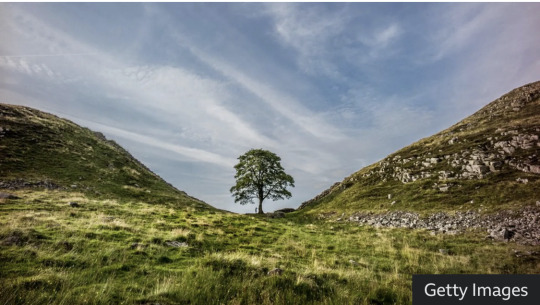
“The horticulturalists also successfully planted seeds from the Sycamore Gap tree, now its descendants. Five months on, they are looking after nine surviving grafted plants and 40-50 seedlings.”
7. Massachusetts library will excuse overdue book charges in exchange for cat photos: ‘Feline Fee Forgiveness’
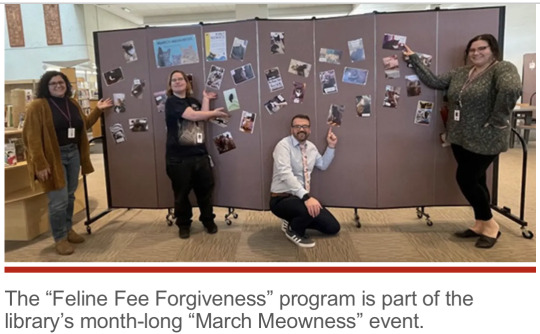
““Some of the staff were in a meeting and they were coming up with ways to bring people back to the library, and they thought, ‘What if we removed as many barriers as possible and told people they could show us a picture of a cat, draw a picture of a cat or just tell us about a cat?'””
8. Lesbian couple give birth to each other’s baby in UK first

“Their success marks the first time the procedure – which allows lesbian parents to simultaneously share in the pregnancy process, with one supplying eggs and the other carrying the baby – has been carried out in the UK.”
9. Biden-Harris administration has established four new units in the National Wildlife Refuge System
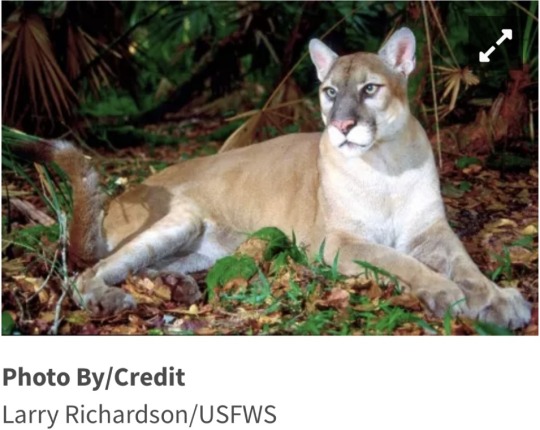
“The new four-million-acre conservation area will provide crucial protected wildlife corridors, enhance outdoor recreation access to the public and bolster climate resilience in southwest Florida.”
10. New truck front to save lives
“[B]etter truck designs can reduce passenger car compartment deformations by 30-60 percent, which reduces the risk of injury for the car occupants. Deformation of the truck was also reduced in sensitive areas and improved truck driver safety and cargo security.”
March 1-7 news here | (all credit for images and written material can be found at the source linked; I don’t claim credit for anything but curating.)
#hopepunk#good news#bald eagle#eagles#trees#sycamore gap#aurochs#portugal#cattle#heat pump installation#wolverine#colorado#coral reef#library#cats#lgbtqia#lgbtq#ivf#florida#puma#cougar#wildlife#habitat restoration#trucks#safety#animals#ecology#tauros#rewilding#uk
9 notes
·
View notes
Text
I Voted
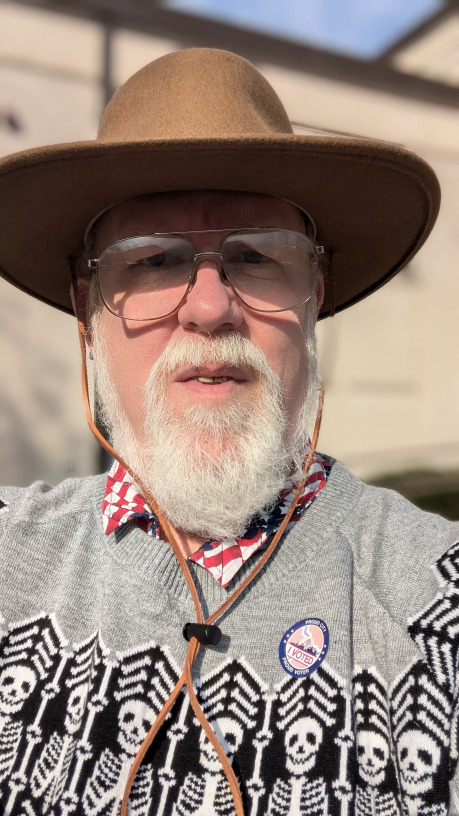
I voted Monday morning the week before the election (Halloween week, as you can see from the selfie), Got there 10 minutes before the polls opened, got out 50 minutes later, no troubles except my usual complaint about mediocre disability accommodation.
I meant to vote 6-7 days ago. As soon as I made up my mind to do so, my anxiety disorder reared up, hard; I haven't slept more than 3 hours at a stretch for over a week. My nervous system is doing everything it can to keep me from leaving the apartment at all.
Some of this happens every year the first time it drops below 35F at night and stays that way until well after the last time in the spring. I have a nearly lifelong phobia of freezing temperatures. But this year is worse.
Almost every election day I bribe myself to vote by hitting the breakfast restaurant closest to the polling place, treating myself to a nice big breakfast that I don't have to cook or clean up after. This time my early-voting location was a city library branch a couple miles north of here. The bus route between us is reliable and frequent, and almost half the old diesel buses have been replaced quieter, better smelling, more reliable electrics and got me there fine.
Before voting, I was having a nice breakfast in a kinda-hipster restaurant neighborhood that's very popular with the nearest university, lots of kids between classes having a nice brunch. The street between us has finally had its final redesign announced with construction starting next year; by the next election, thanks to our progressive-majority city council and nominally progressive mayor, we'll have a roughly 8 mile protected bike lane with bump-outs at every intersection to stop speeders from speeding in the parking lane, the number one source of pedestrian and cyclist fatalities in that stretch.
Yeah, the parties are both trying to fill me with dread but I haven't seen or heard a single campaign ad from either party in years; I don't listen to broadcasts and uBlock Origin is that good.
So why the ambient dread? Why the thrice-nightly nightmares? Why does it feel like a friend of mine used to describe the movie Cabaret: "long, dull, and full of nazis"?
I thought about it over breakfast and while walking from there to the polls, and my only guess is that it's because of what didn't happen after January 20th, 2021. There's nothing new about the center right party in the US being taken over by crazies who drove it off of a cliff. That's why the original Democratic Party is still here but the center-right party is on its third name. But all three times before, when the treason was revealed, there was so much revulsion that most of the traitors were primaried by moderates, when the moderates and surviving crazies ran in the general they were trounced as the suddenly horrified voters and eventually most of the moderates defected to the Democratic Party for at least an election cycle or two.
What horrifies me is that January 6th, 2021 wasn't a bridge too far. That they looked away, that they erased it from their memories, that they justified it and they're not shy at all why: no matter how awful the revived America First movement is, no matter how increasingly overtly fascist it is again? They hate the Democrats that much more than they hate the nazis.
Which whether they win or lose is still a problem. It's like the analogy of the pizza party: three of your friends vote for ham, you and one other friend vote for sausage, and two of your friends vote to kill and eat you personally. No matter how that vote turned out, you have a problem!
Like that Carsie Blanton song I reblogged a month or so ago said. In pursuit of energizing their base with fear, political consultants have persuaded our country that there are only two kinds of Americans. Not two kinds of politicians, not two kinds of parties, but two kinds of Americans: dumb whiny rednecks with tiny dicks in the exurbs and remaining rural towns, and ugly nasty commie bitches in the cities and inner ring suburbs, and the two tribes are at war, and whether you like it or not, you're one or the other.
Gods, I wish the culture war would end. We have bigger fish to fry and that more urgently, no time left to fight each other. And I know I'm not the only one being driven literally crazy by it.
6 notes
·
View notes
Text

Old map of Torment and its surroundings. The middle of the Second Great Tournament
Torment is the Capital of Resonance, a place where different worlds converge. In its scale, the city resembles an entire country, including various natural areas. From the north the city is bounded by the Gray Sea, from the south by the great Wasteland left after the Namelessgael Battle, from the west by the dense Intermittent Forest, and from the east by the Great Ridge.
The Route of the Winners runs through the city, like an artery, ending with the Square of Scarlet Petals, the giant Colosseum and the most beautiful Palace of the Winners, shaped like a three-rayed star. In the western part there was a Court Hall reserved for the Justice. In the eastern part is the Hall of Fame, dedicated to the heroes of the Tournament. And the third part was closed to the public. The Singers of Lycoris made the Palace their residence after it was completed for the start of the Second Tournament.

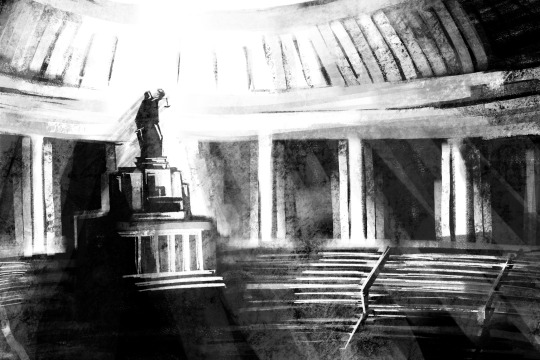
To the east of Torment are the Free Tournament Lands, as they are home to many different factions. These factions include followers of the Black Church of Londor, led by the Dark Mark, and the Heresy, consisting of three former sectarians: the Priest, the Cardinal and the Scarlet Monk. The Heretics lived in a distant tower by the sea in the east, which collapsed at the end of the Second Tournament, and the quarter of Londor was burned by the Archer.

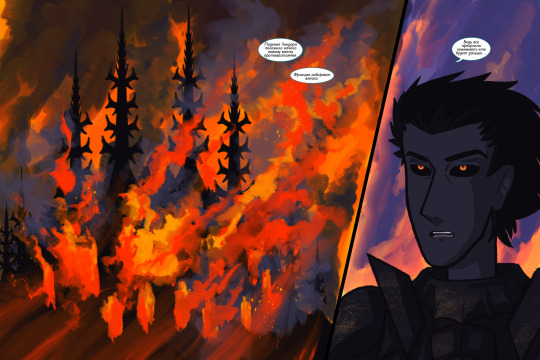
After the end of the First Tournament, the Artist, who followed the Rebellion, decided to move away from the battles and settled on the coast, devoting his life to creativity.
The Ashina Clan lives in the mountains, so these lands are called the Lands of the Ashina Clan or the Lands of the Samurai. Higher in the mountains live dragons, and followers of the Path of the Dragon live there, among whom is the Archer.
To the south, located under the mountains, in the swamps stands the great Red Temple and the Cathedral of the Red Hood, popularly called the Sect Temple. Before the construction of the Palace, the Temple was the tallest building in the city, inspiring God-fearing awe. The temple consists of many small cathedrals, connected by secret passages and bridges, creating a multi-level system. The temple attracts magicians and fanatics from all over Torment, they settle in the vicinity of the Temple, dreaming of getting into the great temple library with the largest collection of books in the entire city. The Patriarch ruled the Sect Temple until his mysterious disappearance, after which control passed to the Dark Mark, as a faithful follower of the Legion of the Bald Patches (as LBP), which the Sect became in the new era. The Dark Mark opened access to the temple library and since then the Chronicler began working there.

To the south is Restland or Lesser Torment - village settlements and taverns where you can relax or place bets on the idols of the Tournament. Some, standing in Restland, see beyond only endless fields and forests, but if you go even further south, you suddenly find yourself in the great Wasteland left after the fateful battle of the First Tournament. A huge scorched space, full of craters, as if from fallen meteorites - this is the scar left on the body of the city from the Tournament.
At the entrance to the city on the Square of White Petals, travelers are greeted by a statue of the Nameless King and the Slave Knight Gael, dedicated to the idols of the same name of the First Tournament.
Like mirror images, on opposite sides of the Route are Moronorath, like the Old City, and Golden Streets, residential areas. Once upon a time, Torment was a small coastal town that began with Moronorath. Now the Old Town is almost completely abandoned, but it is not being rebuilt, leaving it as a historical monument. In the Golden Streets you can find the office of the United Organization of Undead Merchants (as UOUM), which is run by the Devil himself, who invested fabulous money into its creation after the First Tournament. The Devil himself lives in a private mansion near Restland, where you can get to a reception if you try really hard.
Deep in the Golden Streets lies a secret descent to the underground levels of the city, where the Rebellion established its secret underground city during the First Tournament - the Rebel City. After the conclusion of peace, the city was opened to other citizens, since then it remains only a historical monument, since the Radiant settled in one of the mansions of the Golden Streets, as an honorary knight-winner of the Tournament.
Near the wall surrounding the city there is a nobody's golden house. But in fact, this house has only one owner - Sir Anonym, a golden knight assassin, who came to the city to protect his tournament idol. Previously, Sir Anonym lived in the Cauldron of Souls, exterminating thieves and bandits there, for which he received his nickname, but one day the Devil hired him for his affairs, promising to help in the Tournament. From then on, Sir Anonym became a Champion who, as it turned out, truly had a heart of gold.
In the area of the Cauldron of Souls, the city wall is sinking, creating gaps through which you can get into the forest. Many Champions and forest creatures come from the forest in those places, which is why the Cauldron of Souls suffers. Many interworld travelers pass here, but do not stay for long. The Cauldron of Souls is a slum inhabited by bandits, prostitutes, thieves and other rabble. It was from there that the Crow Plague epidemic began, for which the Lunar Cult of Half-Ravens was blamed. Deep underground under the Cauldron of Souls there is a Sewer, consisting of many intricate passages that lead to the Rhizome - a hollow space under the forest. Hidden in the Rhizome was the Nestling, a mutated tournament idol who was responsible for spreading the Plague.
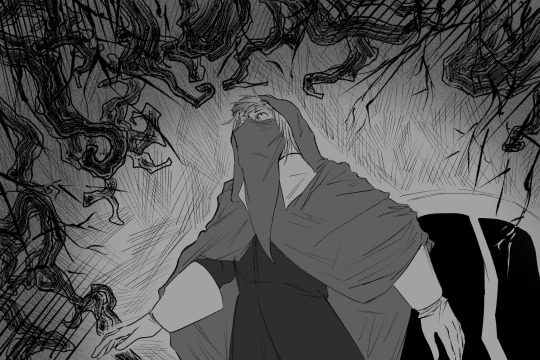
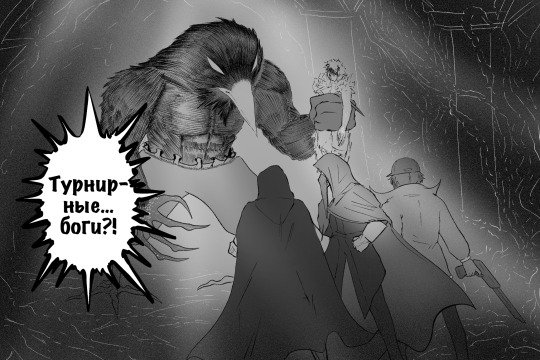
The Intermittent Forest is an unstable area of Torment where you can easily get lost, but even here there are Champions. In the Mossy Valley lives the Leshy - a friend of the Devil and Sir Anonym, and even further in the forest there is a sanctuary of the Lunar Cult of Half-Ravens, ruled by the High Priestess. This faction pledged allegiance to the moon god Gwyndolin, which displeased the other half-ravens, causing the sanctuary to split. The Lunar Cult - those who are in contact with Torment.
In the forest, far from the city, at a crossroads there is a Tavern, where travelers walking through the forest rest. All the meetings that took place there were not accidental. They say that even the gods come to the Tavern.
And in the northwest there is a quarter called New Yharnam. It is a place full of Gothic cathedrals, universities and shops of merchants of narrow professions, such as barbers and alchemists. By a strange coincidence, the Plague of the Beast does not leave this quarter, which is why the Hunters live only there. This location is home to the Pale Blood Alliance faction, ruled by the Marauder and the Chronicler. The Chronicler records the history of Torment.
Due to the nature of its location, Torment is very unstable in terms of geography. Very often you can see mirages, and when you leave the city, you return to it again or never return.
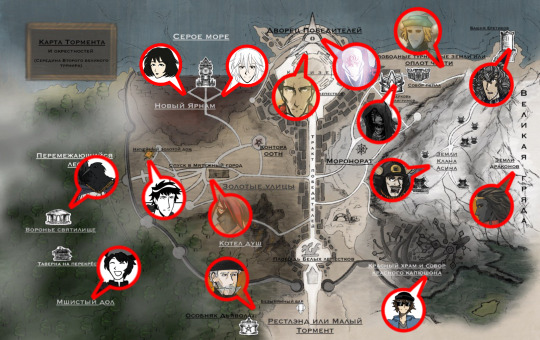
Old map of Torment and its surroundings. The middle of the Second Great Tournament (with Champions)
#art#chronicle of torment#torment#digital aritst#artists on tumblr#digital art#digital illustration#fanfic#fantasy#dark souls#elden ring#ocs#oc art#oc#original comic#original character#original art#oc lore#lore#maps#dark souls 3#silmarillion#sekiro
5 notes
·
View notes
Text
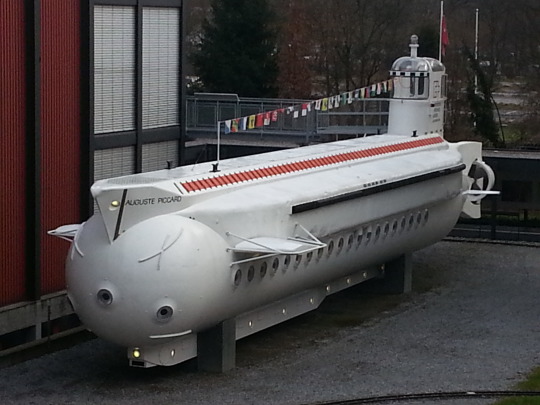

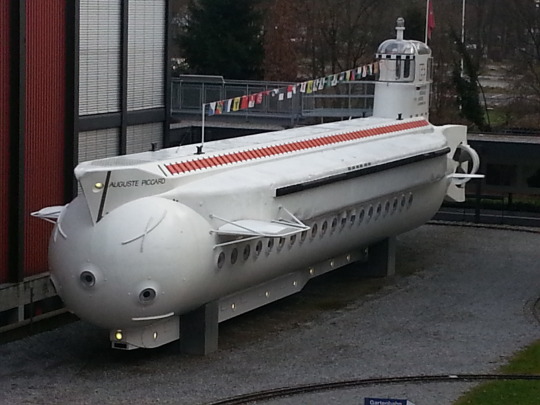
National Submarine Day
Pay tribute to the many souls lost beneath the ocean, and consider the game-changing effects of the invention of the Submarine on our technology, warfare, and more.How low… can you go? How low… can you go? When it comes to National Submarine Day, it’s easy to believe that it’s pretty low.
History of National Submarine Day
Some people may find it hard to believe that the first recorded submersible was built by Cornelius Drebbel in 1620! This underwater ship was apparently built for James I of England for use in London, although why anyone would want to plunge beneath the surface of a 17th century Thames is difficult to understand!
The original versions of submarines were built to hold only one or two passengers, but modern versions are made to hold up to 100 passengers. Typically, since this is a very dangerous job, militaries will use as few people on their crew as possible.
April 11, 1900 is the date when the United States government purchased its first commissioned submarine, named the USS Holland. The USS Holland was the United States Navy’s first commissioned submarine, named for her Irish-American inventor, John Philip Holland. (It is important to note that this was not actually the first submarine of the US Navy, which was the 1862 Alligator.) But this boat was originally laid down as Holland VI, and launched on 17 May 1897.
Having played major parts in military operations for over a century, today’s submarines are, of course, far more sophisticated than that particular oar-powered contraption. The amount of expertise that goes into their design, construction, maintenance and operation is quite staggering, especially when you take into account the inclusion of navigation and communication networks, sensors, armaments and weaponry, and powerful propulsion systems. This is all in addition to the most important part of a submarine: a large number of rigorously trained and highly skilled men and women who are often putting their lives on the line for their countries!
In honor of that first commissioning of the USS Holland in 1900, National Submarine Day was established to be celebrated each year on the anniversary of this date!
How to Celebrate National Submarine Day
Today’s observance of National Submarine Day can take on many forms. Here are some ideas for making plans, but feel free to go far beyond and get creative with some of your own ideas too!
Visit a Submarine
Those who are serious about observing National Submarine Day might want to consider taking a road trip to a museum or other exhibit where a submarine is accessible to the public. Smaller retired subs often find themselves put on display for adults and children to see and experience what it is really like, in places like children’s museums and science exhibits.
Various submarine tours can be found in port cities in the United States and other countries, including Australia, Canada, the United Kingdom, Denmark, and many other European countries.
Learn Fun Facts About Submarines
In celebration of National Submarine Day, raise awareness for the day by learning about and sharing some of these interesting bits of trivia:
Submarines were used in the American Civil War. The South built small steam-powered subs called “Davids” to fire torpedoes at the ships from the North.
The furthest dive completed by a submarine was 35,858 feet.
The world’s first submarine for the military was designed in the US and built in 1776, the same year the US gained its independence.
The periscope, which is a vital tool for submarines, was invented in 1854 by a Frenchman.
Check Out the Submarine Force Library & Museum
In the US, the only submarine museum in the country that is run by the US Navy is located in the New England state of Connecticut. At the Submarine Force Library & Museum, the first nuclear powered submarine, the USS Nautilus, resides right outside the back doors of the building. Free tours of the sub are given for individuals, families, school trips and more. Scavenger hunts are also a fun way for folks to participate, especially in celebration of National Submarine Day!
Take a Moment to Consider Submarines
In celebration of National Submarine Day, perhaps it would be important to simply take some time to think about and consider this special feat of engineering. Take a moment to think about the ingenuity and majesty of the mighty submarine itself. Celebrate its place in the modern world. Or imagine what these submarines might be like in a hundred years’ time!
But perhaps most importantly, this would be an important time to take a moment to think about those whose lives have been lost at sea over the years and pay tribute to the courage of those who made a sacrifice, whether in the name of their countries or for increased knowledge and science.
Source
#Mesocaph#August Piccard#Verkehrshaus der Schweiz#Swiss Museum of Transport#Luzern#Lucerne#Switzerland#tourist attraction#landmark#technology#engineering#Copenhagen#København#Denmark#Atlantic Ocean#National Submarine Day#NationalSubmarineDay#11 April#travel#vacation#Europe#summer 2006#original photography#cityscape#architecture
4 notes
·
View notes
Note
3, for the books ask!
3. what were your top five books of the year?
in order to not repeat myself too much (imperial radch is really good!), i'm going to interpret this question very narrowly and offer my top five books released in 2023. (and 2022, oops, turns out spear was last year but it's good enough to stay on the list.) in no particular order:
feed them silence (lee mandelo)
every ecologist should be required to read this book imo. it's not marketed as horror, but i experienced it that way--it is such a precise depiction of the greatest failures of my field. abuses of power, basal errors of philosophy, a total refusal to comprehend one's place in the world. it's terrifying. great book.
the spear cuts through water (simon jimenez)
i was just posting about this, but god, this book gets so good. like, unbelievably good, enough to justify my other qualms with it. the front matter is also some of the best i've ever seen. that and the first ten pages of prose will tell you what heights this book can reach. it's a fractal, it's a fourth-wall break, it's a physical thing.
the saint of bright doors (vajra chandrasekera)
i don't know whether or not i like this book, or for that matter whether it is "good" or not, but i cannot stop thinking about it. so it's on the list. there is one of the weirder sex scenes i've ever read, and also a spot-on depiction of research fieldwork, and also no conclusions to any of the promises the book makes at the outset, and also a long and very beautiful sequence set in an unending prison-country. idk. read this and then come talk to me about it.
mammoths at the gates (nghi vo)
i read this book cover to cover in the passenger seat of a pickup truck driving down the laguna mountains. every time i looked up, i was somewhere different--the fog rolled in and washed away; the mountains sank downward. i cried, reading it. it's a book about grief, and young adulthood, and coming to understand that everything changes, even the people you love. there are many talking birds.
to shape a dragon's breath (moniquill blackgoose)
god this book is so full of joy. i had it recommended by a friend with excellent taste and then sat patiently waiting for it to come off library hold for like four months. worth every minute. it's an anticolonial ya dragon rider novel that nails the teenage narrator's voice, has an incredible magic system that you have to go and read about because the moments of discovery are some of my favorite parts and i won't spoil them, and perfectly establishes the magic school trope from an indigenous north american perspective. please go read this book it's so fucking good
end of year book asks!
7 notes
·
View notes
Text
KH OC Week Day 4
Another day, another @khoc-week prompt!
Day 4: Alternate Universes
◾What would your OC's role be in an AU? Examples: Soulmate AU, modern, fantasy, scifi, etc.
KHx-Era Velcia:
An artsy, mousy bookworm in most any circumstance, the KHx-Era Velcia would not likely be found anywhere near the action in most AUs unless she were desperately trying to get away from it. For example, in a setting where a man who has spared no expense has cloned animals of a jurassic nature and placed them into an ill-fated theme park, she would probably be found hiding underneath the kitchen counter desperately hoping she can avoid the notice of the rather hungry raptors who’ve somehow learned to open doors.
In settings where she is able to find a companion to help support her, she is able to blossom into a rather effective support role and provide valuable information and access to research and knowledge. Her fascination with libraries and archiving information help her excel in remote support, as long as she won’t need too heavy a grasp on technology.
KHII-Era Velcia:
In nearly any universe where Velcia can be found, two things stay constant: Her desire to grow her understanding of her fundamental knowledge of the world around her, and her drive to do everything she can to apply this knowledge to help others. In AUs where magic can be found, she will always be found with a strong magical affinity. In the terms of a Final-Fantasy styled magic-class system, Velcia is quite firmly in the Red Mage class tree.
In Universes without Magic, her interests are likely to diverge greatly. In a Sci-Fi or Modern setting she is likely to be a tech scientist. In a Medieval or Fantasy setting with more restrictive rules towards magic she would likely be found working with medicines or potions. And then, of course, there are a few rare universes where she would be found as a very, very particular chef. Castlevania AU! One fun little tangent I’ve been exploring the last few weeks, after playing through a couple of my favorite old Castlevania games (Rondo of Blood and Circle of the Moon especially!) is a Castlevania AU version of the "Modern" Velcia; where I’ve tried to adapt her over with a couple of the same basic beats. In this version of the story, she still lives in Greece with her father, a well-known magician who used to travel across Europe before his daughter was born. One day, a cult looking to revive Dracula appears and tries to enlist her father’s help and, when he refuses, he is murdered and the Anthes residence is burned to the ground. The young Velcia manages to escape with her life and severe burns to her legs, and once she is healed she redoubles her efforts to learn her father’s trade and becoming a capable magician in her own right.
As time passes, she finds that this group has stayed in Greece. Monsters that nobody has seen before have begun appearing and terrorizing the lands, and certain supernatural individuals (Vampires!) are slowly taking over and manipulating things behind the scenes. Understanding that she is not equipped with the knowledge or tools she needs to defeat them on her own, Velcia travels up North to try to enlist the help of the legendary Belmont clan and rid her home country of the cult of vampires and monsters that now work in secret to revive their dark lord.
But, of course, that’s just a little tangent. I’ve got so many other stories to write, I probably won’t get around to that. I… I shouldn’t, right? Right…?
I might.
7 notes
·
View notes
Text
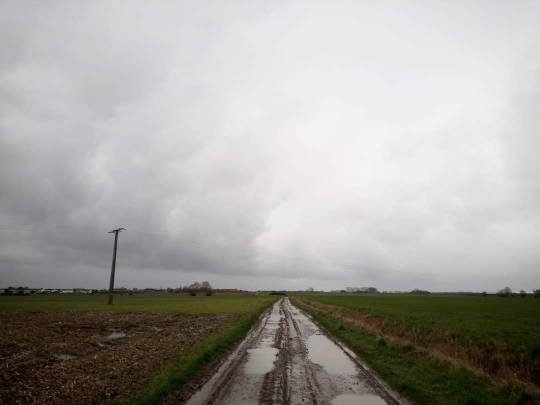


From the Dull Men's Club on a different Hellsite:
"We've been living in Northern France for ten years now. Before we lived in Southern France, which was after we had been living in - while restorating - an old windmill in Flanders, the working part of Belgium (couldn't unsay that one).
Without searching for it for any reason in particular, the old farm we bought here is located right on the Western Front, German side to be precise.
We learned very fast that the past was very palpable in our new environment. First time we got a glimpse from it was when one of our dogs dug up a piece of what was without any doubt a nice pebble to him, but appeared to be a fragment of a German shell - yes l dug a hole of 4m wide and almost 2m deep to get most of the other parts of that explosive - that's how l got to know who fired it in the first place.
His name was Fritz, Frank or Gunter, probably, maybe Mark, and since he was a fresh new recruit in the herd he fired his howitzer way too short, right behind the lines of his outraged fellow brothers in arms. At least, that's how l imagine the story. l apologize for my lack of evidence tho, despite it looking highly plausible to me.
Whatever, lots of artifacts came out of our ground since - bullets, fragments of pipes, an almost completely rotten away army boot with the nails still in its sole, more shell fragments, shrapnel bullets etc, all sorts of elements from military activity in and around our - probably - completely shot into pieces old farm.
You know, l've got a soft spot for old stories and maps. The National Library of Scotland did an outstanding job by digitizing the so called 'trench maps,' used by the allied forces in their daily struggle on Western Front. They are online, and a pure treasure chest for me, seeing our region with a more than 100 year old eyesight every day a little bit more. Allied trenches, less detailed, in blue, and German trenches, highly detailed, in red.
I'm not a souvenir seeker, l'm not an historian, l'm just a no name witness of something l'll never understand.
About this photo. I took it this morning, and y'all agree there's nothing more dull than a muddy road on a rainy day in an almost featureless landscape.
This is today, but more than a hundred years back this was about a few ten meters behind the first German (attack) trench. If ever the Allied forces managed to cross that trench, a flat zone of about 1000m soaked clay, craters, barbed wire, bodies and gear layed in front of them before they got into what would have been the real hornet nest - a second, extremely well defended trench system located on top of that tiny 'ridge' at the horizon of the picture. Well designed, barbed wire, machine guns, everything, and a whole bunch of cannons in the back country that covered the apocalyptic landscape between both trenches (that yellow dot indicates where the photo was taken, looking south-east).
These tiny ridges - ancient dunes during the glaciations - were the key of the whole Western Front north of the Somme. Strategic advantages in a lowland landscape, they defeated Allied leaders and superiors to throw thousands of young men to it.
This region is literally sprayed with war graves. New houses, residential areas, shopping malls and industrial areas are been built, transforming these fields with their ditches into concrete and bitumen, gradually erasing these tiny details in the landscape that remind us of what once was happening here.
When l got back in my car, track 11 of Phil Collins Best Of cd started playing - l'm a child of the eighties. I love good ol' Phil and every time l put another cd in my player, it stays there for several weeks.
Track 11, can't remember the name of the song, started with bag pipes and drums.
Bagpipes and drums. That's how l'm imagining them, storming the enemy lines.
Lest we forget.
Bart. 48 year old Belgian expat in France."
5 notes
·
View notes
Text
Decemberween ’23 — Urban Planning Youtube
Learning things is so cool. You come to understand things about the world around you and the way they operate and maybe this helps you make decisions going forwards about things that interest you. There’s a dark mirror to that though where sometimes you’ll learn about how a thing in your everyday life has been messed up for your whole life and it doesn’t have to be and…
Yeah.
Nobody’s doing anything about it.
Wanna learn about Urban Planning?
Wanna learn about one of many terrible things you interact with every day and how badly handled it is? And how the people who handle it badly want it that way, for bad and selfish reasons, and because they assume nobody knows or cares enough to address them?
Urban planning is something that’s been around you, almost certainly, your whole life. Even if you don’t live in an urban space, and your life and surroundings are rural, you’re still affected by the urban because the urban is where money concentrates and where operations of people get optimised. Rural locations are defined by being not-Urban, and therefore, services and needs for everything are presented in that contrast. Point is… Urban Planning is important.
And it is a subject with a bunch of deliciously nerdy specifics to dig into.
First up here’s Not Just Bikes, a channel from a Canadian expat explaining his life change in the Netherlands. This is a transition from North American car-centric corporate-driven road planning to a place where there’s a deliberate attempt to centre pedestrians.
Now it’s not that this is necessarily an economic cure-all, what with the simple implication that people being active and engaged in their space share community and spend money and that economic activity creates tax revenue and all that. That’s nice, but that’s still buying into a system of the world, the idea of capital as the fundamental way an economy pivots. But it’s important to recognise that just the lived experience of someone who can operate, and the way their life works is just… better?
Kids can hang out with one another, people can do stuff, a trip to the library is a trip to the library and they can just do that… people can spend time in shared spaces and it’s really nice and it’s just pleasant compared to the isolation of people you see in spaces where people have no parks, no places to go, no way to hang out in public.
Then there’s Strong Towns, which in a sort of teasing sense can be seen as the readings that Not Just Bikes is summarising. Strong Towns is the same kind of ideas from a city planner’s perspective, someone with the engineering information. Strong Towns is an American channel, focusing on an American perspective, and for that reason it’s positioned in a very American Political Position. Like, it’s arguing for its position, it’s making a case, and that’s going to involve sometimes, half-statements of cases, or presentation of positions within a particular framework.
Basically, this is urban planning for American Capitalism, too, and it’s done with the idea that you can’t just, say, break Corporations’ backs and demand they fuck off. It’s going to always have that tension to it, where the fundamentally twisted spiral around which the system is built is still going to think in term of taxation and earning and corporate rates.
There’s still a lot of interesting talk about things like speed limits, and road design and the planning that feeds into that. There’s an attempt to generate a political movement here, a base of information and political will that cares about improving city planning and having it so that this is one of many issues that American political powers don’t just assume ‘nobody cares about anyway.’
And where would this kind of setup be without someone who was willing to say something mean? I learned about Alan Fisher because a youtuber from my country, Economics Explained, expressed opinions about how actually, everything ever improving would be bad, actually, real classic ‘well, the results are bad, but the causes are good’ kind of nonsense thinking, and Fisher made fun of it.
This got him into my attention space and y’know it’s nice that there’s someone in this space who isn’t just a complete trains dork, with the permanently gentle demeanour of a person invested in just liking bikes so much. Fisher here is willing to mock. Which, given a lot of the responses to urban planner opinions like ‘maybe it is better if people can walk more’ are often ‘but I like my car, though’ or ‘but taxes, though?’ and it’s worth time throwing some of these dorks’ opinions in the trash.
I’m in Australia, I’m so very far from the actual problem as it’s possible for a person to be while still sharing essentially the same culture. I have public transport in my area, my city is bikeable, and I can walk to the store, the library, and the post office. I do not live in a place that has the same problems these people are trying to address, and I also don’t live in the Netherlands where I can assume my youngest family members will be able to bike to school safely.
But the fundamental issues these channels talk about are ones about who cares about where you live in, and how they express it. They’re about sharing spaces with one another, they’re about community, and they’re about the meaningful ways we can connect to one another in a society that honestly is doing what it can to keep us apart. There’s this term, alienation you’ll hear thrown around in the leftist spaces, and like…
… do you know your neighbours?
Like know them?
What are their names?
I know some of mine. I’ve tried to remember them. I want to make sure I know them.
… but I had to reach out and learn. I had to attend the social meetings, and share some snacks and bake some biscuits and slice.
Check it out on PRESS.exe to see it with images and links!
3 notes
·
View notes
Text
cracks knuckles
Alright, I’m in a worldbuilding rut, so it’s time to dump some old stuff from my Reddit account. My first proper post about the World and Light and Darkness, as well. Nice bonus.
Here are the flags of the nations of the World, and a little bit of info about each. It’s rather long and contains a lot of bright flags.
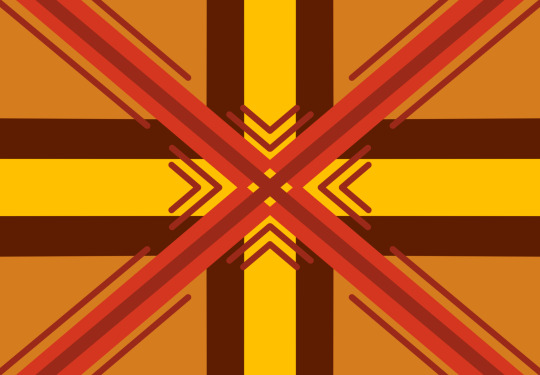



First are the Elemental nations. Elementals are thought of as feisty, known by the rest of the world as bloody warriors and passionate artists, treacherous backstabbers and mighty kings. In reality, they are a fundamentally divided people, but possibly the most diverse in terms of culture. They are native to Lyardia, the eastern continent from which the sun bursts forth every morning. Their appearance is as varied as their nations: their hair and eyes and Tears (skin patterns that signify magic connection) can be every color under the sun, from pure white to deep red to vibrant green or yellow. Though they do not live long lives, with the oldest recorded Elemental being 135 years old at death.

Let’s start in the south. The Republic of the Divided, officially named the Solar Republic, is the southernmost nation of elementals. Both figuratively divided by constant war, and literally by the Serpent-Head River, the great Split-Solar Desert has a long history of never being United. But Prime Minister Drake Farclay is doing his best, essentially keeping the capital of Emelenora out of harm’s way single-handedly. In addition to its many mangrove forests and half of the Setting Sun Mountains, the Republic holds some of the most holy sites in all of Lyardia: the Spires in the Dust and the Foothills of the Fallen are known stalking grounds of Angels.

Moving north and off the west coast, one will come across the United Island Nation. A small country lead by Chancellor Emilia Van Bellow, the Nation has nonetheless come to prominence thanks to their accepting many thousands of refugees from the Conquest, including many of the surviving Element-Born Dragons. In addition to the many ancient libraries and religious institutions of the Dragon’s Church located within the nation, the legendary Sunken City of Flickering Lights have provided the Islanders with such ancient and fanciful knowledge as the Nomad Tribes and the gift of prophecy.

Back on the mainland, it’s impossible to ignore the largest and most powerful nation of Lyardia: the Kingdom of Raicuth, under King Dominic Unican. Cutting the continent in two, all of the Flutter Plains belong to this young and mighty nation. Though the land was once populated by tens of tiny city-states and independent fiefdoms, all were untied, or conquered, under the banner of the Unified Church of the Elements, and the doctrine of the death of all Dragons. An agricultural powerhouse, Raicuth produces most of Lyardia’s food, and has the largest standing army.

Last but certainly not least is the northernmost nation, the Kingdom of Polaris. With the boy-king Shrike Cardinal, the Spearhead, most everyone who visits this land finds it strange. The whole thing is like a factory, with citizens molded into perfect gears from age six. Everything is primed for production and efficiency, from the court system to the navy to the very structures of families. From the Conquered Steppe to the Polar Islands, down the Boundary Mountains and north to the Polar Islands, everything in Polaris does its job.



With the east covered, let us follow the sun west to the continent of Baru, the land of the elves. Long-lived and pointy-eared, the elves are seen as wanderers and scholars, fighters of ancient wars and curators of knowledge unknown even to them. Their history is long and mostly forgotten, filled with fanciful beasts and epic heroes, goddesses in volcanoes and at the bottom of the ocean. Thin and ropey like reeds, the average elf can walk ten leagues in a day and ride twenty on deer-back.

First, let’s take a look at the largest and most organized of the elven nations, though ‘nation’ is certainly a strong word for the United Townships. Haphazardly spread across the southern Verdant Plains, its people are tree-hearted farmers and fighters. Technically ruled by Chancellor Norris Mackir, the successor-state to the Kingdom of Climbing Vines is very relaxed and far less militaristic than its predecessor.

In the center of the continent, there is a far less organized and far more scholarly group that inhabits the Landrise Mountains: the Unlost People. Earth-eyed descendants of the ancient Empire of the Lost, its people are solitary scavengers, digging up history and rarely gathering for anything beside the old holidays.

Off to the south is a strange group, more a solidified idea than anything else: the Raging Sea. Populated by rebels and non-conformers and lead by their founder-president Warrien Kallen, the Sea seeks to become a real nation, like those in the east and the south. They live isolated on Hideaway Island, refusing to communicate with any elf that does not bear the blue Tears of a tide sibling.


The other two continents are united under single nations, and each is an example of successful, but different, forms of government. There are the dwarves of Ravai, sun-sensitive and thought of as shut-ins who do nothing but garden and create, and the Shattered People of Kracon, the bestial-looking thropians, foxes, centaurs, merfolk, and long-bodied dragons.

First, the Dwarven Federation. A small but mighty nation in the very north of Ravai, its seven-member Council oversee the beautiful and strange Garden of Life, the origin of every dwarf’s symbiotic plant. Traditionally allied with the elves in the south of Baru, this nation is a peaceful and productive one.

And secondly, there’s the Sacred League of Xuanteng, also known as the Confederation of the Stars, is home to the longest-lived, and arguably the most powerful, beings in the world. The most modern nation, it was in the Sacred League’s many islands that some of the most influential inventions were first conceived: the printing-press, the steam engine, flash-powder, and countless sciences were birthed from the minds of foxes and long-bodied dragons. Its centaurs are among the best musicians in the World, its merpeople build the best ships, and its thropians are the fiercest warriors. At least, according to the League.
falls over onto a soft chair with a huff
bloody hell that felt good to write. More coming eventually, about cosmology, the creation myth, gods, terrorism, literature, and the seasons.
#worldbuilding#digital art#the world of light and darkness#twolad#i guess those are the tags for this one#vexillology#kinda?#i mean theyre flags so#I left the world of light and darkness to smolder for a few years#but the spark just came back#so im just going with it#get ready for a lot more dragons and a lot more sense#hopefully#i mapped out the whole bloody magic system a bit ago but i lost the paper it was on#going to try and find it or at least remember kinda how it went#its full of all sorts of nonsense like aspects of aspects of very nebulous concepts#for example#the god of performance is an aspect of the god of song is an aspect of the god of birds is an aspect of the god of storms#is an aspect of the god of wind is an aspect of the god of air is an aspect of the god of starlight#for reasons
5 notes
·
View notes
Text
Hey #labour, you should hire me to talk at you about how to actually fix Britain:
Terfs are the enemy, Trans folx are the people.
Small businesses need support on the ground level in order to foster amazing communities.
Invest in education to the point teachers are as paid well as their private peers or dare I say as well as an MP. I would say that if an MP describes their role as being vital, integral and essential to running the country, who receives a handsome tax paid salary with expenses paid with the public purse, why is it that other public sector roles are paid relatively below minimum wage? This applies to all public sector workers; civil servants, NHS staff, and teachers of all stripes. They are just as vital, integral, and essential to running the country, if not more so, than the openly profiteering geezers in Westminster.
Why is it that the rule makers are more important than those ensuring that the rules work? Those holding up society and holding it together are so sorely underpaid in this country that they are giving their lives to you at pittance so you can be okay. The NHS is a wonderful thing, and it breaks my heart that we don't fully fund it. The same goes for education, social services, community organisations, and libraries. These currently literally keep people existing at the bare minimum, but when fully funded and staffed, they transform lives for the better.
Equal pay for Equal work 》 Equal pay for Equal Importance. Ignore the 'we can't pay them the hundreds of thousands that MPs get' elephant in the room. I want you instead to imagine a world in which all public sector workers are paid the exact same amount regardless of hierarchy or public aspect they interact with. I'm no expert, but I reckon £86,584, the basic annual salary for a UK MP in 2023, would be an absolute god send to a junior doctor on roughly £38k. My partner practically works at minimum wage for 50 hours when you account for the marking, the planning, the organisation of your entire schedule to an impromptu meeting with angry parents and worrying about ofsted. It has worn them down, mostly because we can't have a social life, spending money on the theatre, in shops, on things that make us happy and human. We can't save, and we can't afford nice things. That fucking sucks. It wears a person out and throws them out of the system that's holding up the world.
Everyone I know is feeling like the above, regardless if they're private or public, freelance or salaried. One solution to help is basic universal income. Give everyone over 16 £500 & everyone over 18 £1000 each month for a year and see how awesome it would be in a year's time. I already know how much good that would do to me and everyone I know.
So pay everyone £12,000 a year and then pay all public sector workers the base salary of £86,000 rising in step with inflation. If the private sector can, in theory, pay whatever wages it wants, having a guarantee that your basics are paid will eliminate sooooo much stress. Rich folx can donate theirs, college kids can do interesting work at college because £500 buys a lot of art supplies and travel to museums, exhibitions, and events. Youth would have means to explore the nation before university or set up in an apprenticeship. Our elderly can use it to afford end of life care provisions or enrich their retirement or hell, just keep the lights on. Working folx would undoubtedly benefit the most and would probably like their jobs much more if they know things are covered.
To foot the bill, impose a commons tax on all privately owned land that fairly compensates the commons, ie, the UK public, back.
Make the North part of your game plan, rather than a foot note.
On a serious note; nationalise the railway system and expand the network. It is hell going east to west here, up to 3 hours to go 50 miles west and just 3 to get to London from Selby in North Yorkshire. How is this acceptable?
Invest in working class politicians to bring the reality of Britain back into government. Without our views or experiences on the table, why are we surprised when the Tories fuck us over again? If you want true, enthusiastic support from the British people, do not talk at us as if we're irresponsible children and actually engage with the very liberal and progressive discussions we have daily. Especially people under 40 - the older generation that pulled us out of the EU will be gone soon - you need to court and actually help out.
5 notes
·
View notes
Text
BOOG WHY BOOG COME OUT MY MOUTH .. BOOK G LETTER SEVEN EXECUTE EVERY ONE ABOVE NORTH AVENUE .,. GREENMOUNT AREA YES OR NO .. I AM ABOUT TO LEAVE THE TERMINAL AT ENOCH .. VLP .. V 22 L 12 P 16
Enoch Pratt Free Library
4.6308 Google reviews
Public library in Baltimore, Maryland
Website
Directions
Reviews
Save
Share
Call
Description
The Enoch Pratt Free Library is the free public library system of Baltimore, Maryland. Its Central Library is located on 400 Cathedral Street and occupies the northeastern three quarters of a city block ... Wikipedia
Departments: Maryland State Library for the Blind and Print Disabled
Address: 400 Cathedral St, Baltimore, MD 21201
Architect: Edward Lippincott Tilton
Opened: 1882
Phone: (410) 396-5430
Hours:
Open ⋅ Closes 8 PM · More hours
Branches: 22
Director: Chad Helton, President and CEO
Founder Terry.
Terry Lee Kauffman Hawkins
Terry Lee Hawkins Jr.
traeuthaeou
ALLAHTREU TREUALLAH TRUE SCRAMBLED LANGUAGEOLOGIST
Founder Terry.
Terry Lee Kauffman Hawkins
Terry Lee Hawkins Jr
Blaze
Johns Hopkins Homewood Neighborhood in Baltimore, Maryland The prestigious and sprawling Johns Hopkins University campus in Homewood is home to tree-lined paths, traditional redbrick architecture, and a landmark clock tower. The campus features the Shriver Hall Concert Series and the Baltimore Museum of Art, as well as popular Wyman Park, Wyman Park Dell, and Stony Run Trail. The surrounding area has many taverns and casual eateries popular with students.
Terry Lee Kauffman Hawkins is feeling blessed with Terry Lee Hawkins Jr. 3 mins · Terry Lee Kauffman Hawkins is feeling blessed with Terry Lee Hawkins Jr. 11 mins · Terry Lee Kauffman Hawkins is feeling professional with Terry Lee Hawkins Jr. 1 min · Terry Lee Kauffman Hawkins 4 mins · RAVENDOVE Terry Lee Kauffman Hawkins was RavenDove - yin yin / yang RavenDove - yin yin / yang - COLD NUMB AND (LOVIEY DOVIEY) CALCULATED SPELL IT D or L Dove or Love maybe L or D Lover or Dover pythagorean numerology ABC123 Kauffman-Hawkins-Hawk or Hopk -H__kins aw or op and Hopkins signed Booper or just Boop not Book BUT LOKI OR BOOPER SAN with Blaze Pascal. with Terry Lee Hawkins ( male ) @ikigami shinigam HAWKINS HOKINSU/HOKINZU https://www.facebook.com/notes/terry-lee-kauffman-hawkins/bac-formula-racing-f3-series-bac-mission-statement/2296158727310875/ — feeling professional with Terry Lee Hawkins Jr. YES=Y=YES / NO=N=NO
Blaze
India, officially the Republic of India, is a country in South Asia. It is the seventh-largest country by area; the most populous country from June 2023 onwards; and since its independence in 1947, the world's most populous democracy. Wikipedia
Blaze
Johns Hopkins Homewood
Neighborhood in Baltimore, Maryland
Blaze
traeuthaeou
5m ago
YORK OR WORK HOSPITAL Y LETTER 15 W LETTER 23
The University of Maryland, Baltimore is a public university in Baltimore, Maryland, United States. Founded in 1807, it is the second oldest college in Maryland and comprises some of the oldest professional schools of dentistry, law, medicine, pharmacy, social work and nursing in the United States. Wikipedia
Avg cost after aid
––
Graduation rate
95%
Acceptance rate
––Graduation rate is for non-first-time, full-time undergraduate students who graduated within 6 years. They were the largest group of students (75%) according to the 2022–23 College Scorecard data ·more
From US Dept of Education · Learn more
Address:
620 W Lexington St, Baltimore, MD 21201
Address: 620 W Lexington St, Baltimore, MD 21201
Phone: (410) 706-3100
Blaze
0 notes
Blaze
0 notes
Blaze
0 notes
traeuthaeou
2m ago
ALLAH STEP ONE .. GOD TO ALL THOSE PEOPLE NOT A TWELVE STEP LETTER A TO L PROGRAM AT JOHNS HOPKINS AND GOD OR DOG . CHIP HOUSE HUOJINSEN YOU AN ADULT I AM REPORTING TO YOU. H O U S E - H U O J I N S E N . HAWKINGSON TERRY LEE - SOBRIQUET BOOPER BOOPPER THEOS LOKI TEREMY
Terry Lee Kauffman Hawkins
is with
Terry Lee Hawkins Jr.
May 9 at 4:48 PM
·
Terry Lee Kauffman Hawkins is feeling blessed with Terry Lee Hawkins Jr. 3 mins · Terry Lee Kauffman Hawkins is feeling blessed with Terry Lee Hawkins Jr. 11 mins · Terry Lee Kauffman Hawkins is feeling professional with Terry Lee Hawkins Jr. 1 min · Terry Lee Kauffman Hawkins 4 mins · RAVENDOVE Terry Lee Kauffman Hawkins was RavenDove - yin yin / yang RavenDove - yin yin / yang - COLD NUMB AND (LOVIEY DOVIEY) CALCULATED SPELL IT D or L Dove or Love maybe L or D Lover or Dover pythagorean numerology ABC123 Kauffman-Hawkins-Hawk or Hopk -H__kins aw or op and Hopkins signed Booper or just Boop not Book BUT LOKI OR BOOPER SAN with Blaze Pascal. with Terry Lee Hawkins ( male ) @ikigami shinigam HAWKINS HOKINSU/HOKINZU https://www.facebook.com/notes/terry-lee-kauffman-hawkins/bac-formula-racing-f3-series-bac-mission-statement/2296158727310875/ — feeling professional with Terry Lee Hawkins Jr. YES=Y=YES / NO=N=NO
Blaze
0 notes
Blaze
0 notes
Blaze
0 notes
Enoch Pratt Free Library
4.6301 Google reviews
Public library in Baltimore, Maryland
Website
Directions
Reviews
Save
Share
Call
Description
The Enoch Pratt Free Library is the free public library system of Baltimore, Maryland. Its Central Library is located on 400 Cathedral Street and occupies the northeastern three quarters of a city block ... Wikipedia
Departments: Maryland State Library for the Blind and Print Disabled
Address: 400 Cathedral St, Baltimore, MD 21201
Architect: Edward Lippincott Tilton
Hours:
Open ⋅ Closes 8 PM · More hours
Opened: 1882
Phone: (410) 396-5430
Branches: 22
Director: Chad Helton, President and CEO
Johns Hopkins Homewood
Neighborhood in Baltimore, Maryland
Blaze
0 notes
Blaze
Blaze
0 notes
Blaze
0 notes
2 notes
Blaze
0 notes
0 notes
Text
Smart TV Stick Market Expands Rapidly with Innovations in Streaming Technology and User Experience
The global Smart TV Stick market is undergoing a transformative phase, spurred by growing consumer demand for affordable, flexible, and high-quality streaming experiences. A Smart TV Stick is a compact device that plugs into a television’s HDMI port and turns it into a connected, streaming-capable TV. These devices, powered by platforms like Android TV, Fire OS, and Roku, provide access to thousands of streaming apps, live TV, games, and other interactive features.

Market Dynamics and Growth Drivers
The rise in cord-cutting behavior has been a primary catalyst for Smart TV Stick adoption. As more consumers move away from traditional cable subscriptions, they are turning to streaming platforms to meet their entertainment needs. Smart TV Sticks offer an affordable gateway into this world without requiring the purchase of a new smart TV.
Affordability is another critical driver. These devices are significantly less expensive than smart TVs, making them especially attractive in emerging markets. The low cost, combined with increasing broadband penetration and the global proliferation of OTT (Over-the-Top) content platforms, has fueled rapid market expansion.
Additionally, technological advancements have contributed to the growth of the Smart TV Stick market. Modern devices now support 4K resolution, HDR (High Dynamic Range), and voice-controlled virtual assistants. This not only enhances user experience but also increases product differentiation, fostering competition among key players.
Competitive Landscape
The Smart TV Stick market is highly competitive, with major players including Amazon (Fire TV Stick), Google (Chromecast with Google TV), Roku, Apple (Apple TV), and Xiaomi (Mi TV Stick). These companies invest heavily in ecosystem development, ensuring their devices integrate seamlessly with smart home environments and other digital services.
Amazon’s Fire TV Stick has been a dominant force due to its aggressive pricing, deep integration with Alexa, and a wide range of supported apps. Google’s Chromecast has redefined how users interact with streaming content by leveraging mobile devices as the main interface. Meanwhile, Roku’s user-friendly interface and broad content library have helped it gain a substantial foothold, particularly in the North American market.
Regional Insights
North America currently leads the Smart TV Stick market, driven by high internet penetration, widespread availability of streaming services, and a tech-savvy population. However, the Asia-Pacific region is expected to witness the fastest growth rate over the next few years. This surge is largely attributed to rising middle-class income, increased digitalization, and government support for broadband infrastructure.
In countries like India, Indonesia, and Brazil, consumers are increasingly adopting Smart TV Sticks to access regional content, global platforms, and multilingual services, all at an affordable cost. These emerging economies represent a major opportunity for manufacturers to expand their market reach.
Consumer Behavior and Preferences
Modern consumers prioritize convenience, customization, and content variety. The plug-and-play nature of Smart TV Sticks, combined with their portability and ease of use, aligns perfectly with these expectations. Moreover, as subscription fatigue becomes a real issue—due to the abundance of streaming services—Smart TV Stick users appreciate the ability to consolidate various platforms in one device.
Voice control, personalized content recommendations, and integration with smart home devices are becoming increasingly important features. Users now expect seamless experiences, where their TV stick interacts smoothly with other connected devices in their ecosystem, from smart lights to security systems.
Challenges and Future Outlook
Despite the booming demand, the market faces challenges such as competition from Smart TVs with built-in OS platforms, potential security vulnerabilities, and fragmented content ecosystems. Furthermore, the constant evolution of consumer expectations means manufacturers must innovate continuously to maintain relevance.
Looking ahead, the Smart TV Stick market is poised for continued growth, fueled by emerging technologies like 8K streaming, AI-driven recommendations, and enhanced gaming capabilities. Integration with metaverse platforms and increased support for interactive content could also redefine how users engage with media.
In conclusion, the Smart TV Stick market represents a dynamic and fast-evolving segment of the consumer electronics industry. As streaming becomes the dominant mode of content consumption globally, these compact devices will continue to play a vital role in reshaping the entertainment landscape, making smart viewing accessible to households everywhere.
#SmartTVStick#StreamingDevices#OTTPlatforms#HomeEntertainment#DigitalMedia#TechTrends#ConsumerElectronics
0 notes